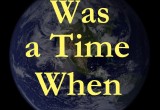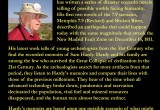Sam Penny Announces Publication of A New Novel: Was a Time When
Online, January 22, 2012 (Newswire.com) - What Happens WHEN, not IF, Resource Depletion, Population Pressures, and Climate Change Push the World of Our Grandchildren Into A Great Collapse?
Author Sam Penny has completed the publication of his third novel, a scenario of what the remainder of the 21st century could be like as civilization collapses around the earth, and in particular on the west coast of the United States.
The story centers on Sam Hardy, a man born in 2015 who is the last surviving member of his tribe in central Oregon. Hardy writes his memoirs in 2099, records them on a compact disk, and stores the disks in a stone box. Nine hundred years later, in 3100, a team of young archeologists from northern Canada find those recorded files as they search for knowledge and artifacts from the time of the Great Collapse. They listen to Hardy's story and compare their lives with those of the previous millennium. They hear of a time when all advanced technology broke down, pandemics and starvation decimated the population, vital fuel and mineral resources disappeared, and the human race almost became extinct.
The printed book and a Kindle version of Was a Time When are available from Amazon.com. The prices are $14.98 and $3.98, respectively.
Penny says, "Hardy's memoirs are one possible scenario of what might happen to the world we live in. The novel is a cautionary tale, a warning of what could be the fate of the human race if it does not correct its self-destructive behavior that is destroying the environment. Humankind must begin to think rationally about how to create a new world that can survive the trials ahead of us."
Penny started the novel in 2006 as a writing exercise for the National Novel Writing Month project. "I chose a project to write the memoirs of my fictional great-grandson who lives to the end of this century. Those memoirs would be discovered and read a thousand years later by his descendents. After a month I had a good start, but found I needed to better understand the kind of world my progeny would experience."
Penny researched the many blogs and articles written on the Internet by the futuristic doomers and optimists alike to understand the most probable trends that could affect the world in the remainder of this century. He concluded that the depletion of liquid fuels in the near future would lead to a significant drop in food supplies, possibly within the next twenty years. Climate change and the resulting rise in sea-levels would exacerbate the problems by destroying much of the coastal regions around the globe. Without sufficient food to feed everyone, there would be wars and mass starvation and pandemics. By the end of the century, the earth's population could drop to less than a billion.
"I also concluded that the great technology we enjoy today would not survive without fuels. Our infrastructure would fall into ruin, and our marvelous electronic-based information system could not continue to function. The possibility for a Great Collapse seemed very real."
Penny continues, "I enjoy building scenarios of significant events. In 2002 and 2005 I published my first two novels, Memphis 7.9 (Revised) and Broken River. These books described a scenario of the conditions that represented my best estimates of what would happen if a great earthquake struck today on the New Madrid Seismic Zone under the Mississippi River."
Two hundred years ago, on December 16, 1811, the first of four in a series of great earthquakes stuck that region, wrecking havoc over 650,000 square miles in what is now the central United States, shaking the foundations of cities from Toronto, Ontario to Boston, Massachusetts to Charleston, South Carolina.
The 1810 census reported the population of the affected region to be about 5,000, plus as many as 20,000 slaves. This covered the cities along the Mississippi and Ohio rivers, including Louisville, New Madrid, and down to Memphis. That census did not even consider the sizable Native American Indian population in the area.
Some estimates suggest that as much as 20% of the total population was killed as a result of the seismic activity and pestilence that followed. It was a small number back then, but today over 32 million people live in the threatened region; 20% would be 6.4 million.
"The scenario for Was a Time When is much more involved and considers the interplay between resource depletion, climate change, and population overshoot. I looked at some worst cases and decided that our civilization could collapse in less than one hundred years." Penny adds, "Besides, I had a real limit on how long a person might live in those conditions."
Penny concludes, "I will measure my success with Was a Time When by how many people will realize the danger our civilization faces and begin to proactively prepare for survival of the human race. My new website at www.wasatimewhen.com will serve as a center for discussions of what can be done to mitigate this scenario."
Was a Time When is available as a printed book at CreateSpace or at Amazon.com as a printed book or a Kindle file. Active book reviewers may contact TwoPennyPubs@wasatimewhen.com to ask for a free review copy or a .pdf or .prc file download.

